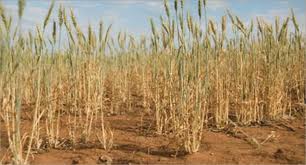
Drought
“The beasts of the field cry also unto thee: for the rivers of waters are dried up, and the fire hath devoured the pastures of the wilderness.”
Ezekiel 1:20
Perilous Times and Climate Change
US southwest to see 60-year drought: study*
by Staff Writers
Washington (AFP) Dec 13, 2010
A worst-case scenario devised by US researchers shows that the American southwest will experience a 60-year stretch of heat and drought unseen since the 12th century.
Researchers at the University of Arizona examined studies of temperature changes and droughts in the region over the past 1,200 years and used them to project future climate models in the hope that water resource managers could use the information to plan ahead.
An examination of the past, through human-kept records but also via rings in the cores of trees that can show periods of wetness or drought, showed that dry spells of earlier centuries were much worse than any we have seen in modern times.
"Major 20th century droughts pale in comparison to droughts documented in paleoclimatic records over the past two millennia," the researchers wrote, noting that high temperatures coincided with lengthy dry spells in medieval times.
"We're not saying future droughts will be worse than what we see in the paleo record, but we are saying they could be as bad," said lead author Connie Woodhouse, an associate professor of geography and regional development.
"However, the effects of such a worst-case drought, were it to recur in the future, would be greatly intensified by even warmer temperatures."
In the mid-12th century, a six-decade-long heat and dry spell covered most of the western United States and northern Mexico, the researchers found.
During 25 years of that period, the Colorado River -- an important tributary that today feeds seven US states including the big cities of Los Angeles, Las Vegas, Denver, Phoenix, Tucson and Albuquerque -- flowed at a rate of 15 percent below normal.
Over the past decade, sampling of the Colorado shows the river is at its lowest point since measurement records were first kept in 1906.
"As this drought unfolds you can't really evaluate it until you're looking back in time," said Woodhouse.
But indications such as temperatures that are higher than noted in the previous 1,200 years, coupled with research that predicts falling winter precipitation in the southwest, bode ill for the future.
"The bottom line is, we could have a Medieval-style drought with even warmer temperatures," Woodhouse said.
The team's paper is titled "A 1,200-year perspective of 21st century drought in the southwestern North America," and appears in the December 13 online edition of the Proceedings of the National Academy of Sciences.